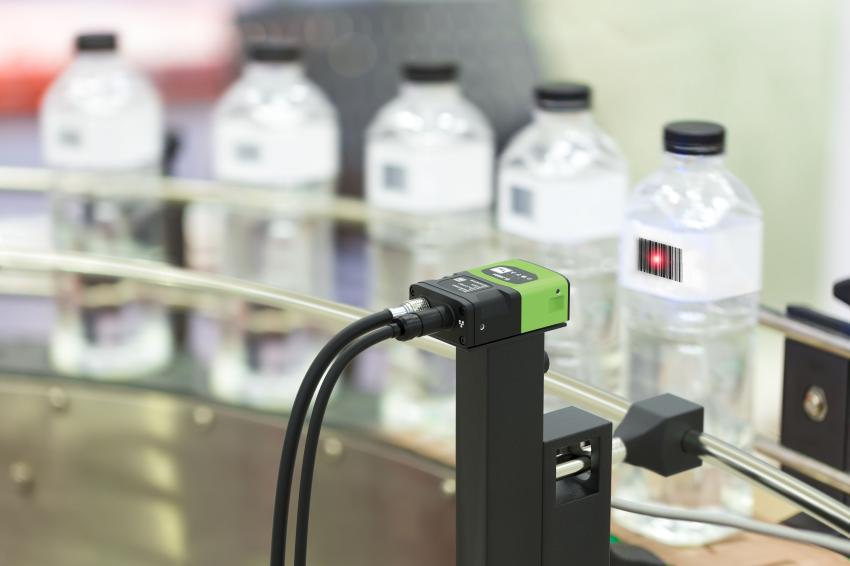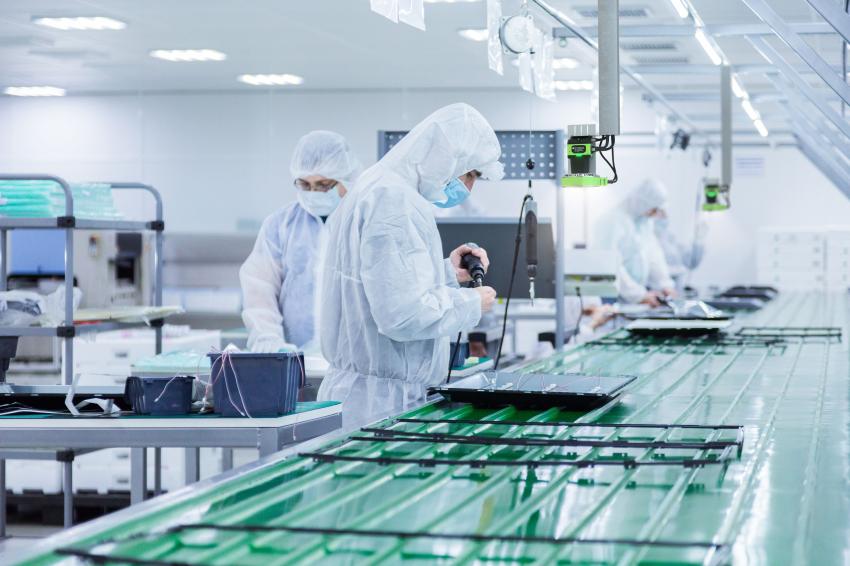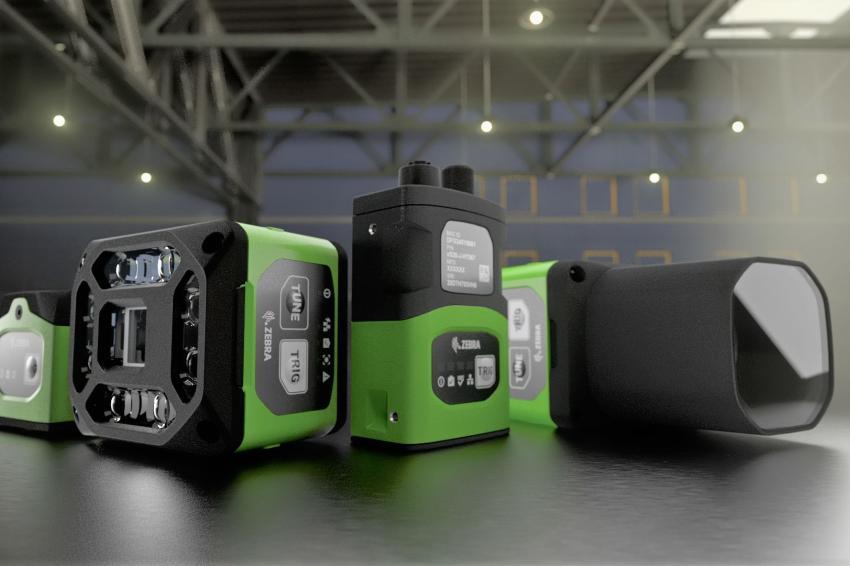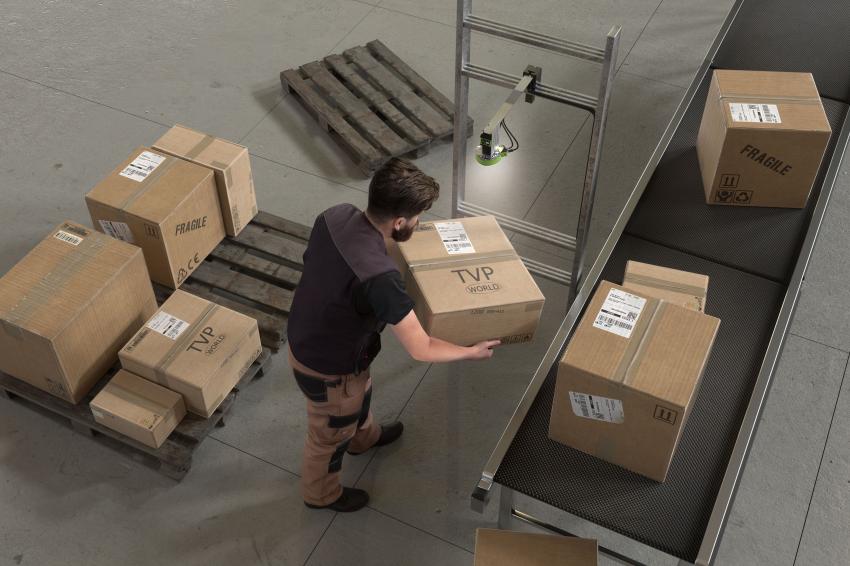Fixed Industrial Scanners for the Optimal Material Flow
Improving Intralogistics Processes
The requirements for speed and accuracy in goods tracking have risen continuously in the past and required more and more performance from the code readers: Today, high reading rates and a minimization of incorrect or failed code readings are the basic prerequisites for precisely tracking objects.
In order to achieve the necessary effective profitability for companies, the trend has been towards fixed industrial scanners for some time, which reduce the manual effort for the employees to a minimum and thus contribute significantly to having all the necessary information available with the greatest possible security at all times. These permanently installed systems always present a particular challenge when the distances between reader and object often vary, for example due to different product sizes.
Diverse Tasks
Fixed industrial scanners offer effective solutions in numerous application scenarios. For example, they facilitate and accelerate the workflow when scanning codes manually, as employees only pass the goods under a overhead code reader, without having to pick up the reader themselves. In this way, objects of various dimensions with different code types can be handled easily, safely and quickly, regardless of the heights of the employees. Employees can use the time gained in this way for higher-value tasks.
If packed or unpacked goods are automatically guided through the processes on conveyor belts, fixed industrial scanners show their advantages even better. Inline systems of this type require considerably less personnel, and also create the conditions for 24/7 processes that can run around the clock without fatigue. Current practical tests show an improvement in reading rates in the range of up to 10 percent compared to manually performed reading processes and thus a significant increase in effectiveness. The combination of stationary barcode readers and conveyor belts, on which goods are passed for reading 1D and 2D codes, forms an excellent setup in many applications in production, quality control, packaging processes and the storage and retrieval of objects.
Applications where labels with information about the product or the production process are printed and attached during the process are another field where fixed industrial scanners show their strengths. With their help, it is possible to check very quickly, safely, and automatically whether the labels are present, correctly applied, of sufficient quality and whether the printed 1D and 2D codes are legible. Due to the early check, for example directly after the label has been printed, such systems reduce the manual effort and the error rate considerably and ensure trouble-free processes in the further process.
The final example of the economical use of fixed industrial scanners are assembly checks, which are often still carried out manually or with the help of more complex systems in many industrial areas. Code readers, which are permanently mounted above control stations, allow a reliable quality control check of codes on components in order to ensure that they are correctly assembled.
Wide Range of Fixed Industrial Scanners
Zebra Technologies is one of the world’s leading providers of automation solutions for industry and recently expanded its range to include fixed industrial scanners. The innovative product family currently comprises four models:
- the compact plug & play device FS10 for simple track and trace applications without networking,
- the compact, networkable barcode reader FS20, which enables simple track and trace applications with network connection,
- the FS40 model, which, with its wide range of functions, is also designed for more complex track and trace applications, and
- the FS70 barcode reader, which can be fully adapted to the requirements of the respective application and is therefore suitable even for difficult track and trace applications.
A special feature of all fixed industrial scanners supplied by Zebra Technologies is that they are designed very flexible from the ground up that they can be easily adapted to changing business and customer requirements. Users therefore do not have to consider all possible future scenarios when designing their systems but can concentrate fully on the current tasks. If expansions are required at a later point in time, these can be carried out quickly and easily using appropriate upgrades. This flexibility leads to a maximum profitability of the purchased devices for users and gives them complete freedom as requirements grow.
The following example shows which advantages this offers: If only the pure recording of 1D and 2D barcodes is currently to be implemented in a system, a simple fixed industrial scanner such as an FS10 can be sufficient. If it becomes necessary later in this application to also record direct part markings or plain text, this task can be solved within a very short time by purchasing a corresponding software license. From an economic point of view, this results in optimized profitability for the user.
Uniform Software Platform
The cost for programming and setting up automation devices is often significantly higher than the cost for hardware. Anyone who can solve these tasks in a shorter time saves personnel costs and thus lowers the overall investment. With this in mind, Zebra Technologies has developed Aurora, a particularly simple and elegant solution for controlling the company-wide automation of production and logistics. This powerful software interface enables problem-free configuration, provision, and operation of all fixed industrial scanning devices in a company.
Aurora’s intuitive and state-of-the-art user interface displays work processes in a logical way and allows users to make complex settings using sliders and option buttons with just one or two mouse clicks without having to search for the required functions. Even beginners can quickly find their way around the clear management platform as they are guided through all the necessary steps in the correct order. Should any questions arise during setup, the integrated help with easy-to-understand tutorials, precise instructions, and videos on all aspects of the software and the comprehensive administration tool set provide quick answers.
In addition to fixed industrial scanners, Zebra Technologies has also developed smart cameras for industrial machine vision. This product family can also be easily managed via Aurora. Users who use both product groups in their systems benefit from faster familiarization, less training and a simple, uniform architecture of the software tools required to control their company-wide manufacturing and logistics solutions.
Wide Range of Applications
With its innovative fixed industrial scanners, Zebra Technologies primarily addresses warehouse and logistics applications, but also the manufacture of products of all kinds and many other industrial areas in which the effective, automated detection and reading of barcodes is an essential prerequisite for economic processes. The company uses its many years of experience in the field of barcode reading and transfers this to new target markets for its fixed industrial scanners and smart cameras. Users will definitely benefit from the increased efficiency.
Author
Rudolf Schambeck, Business Development DACH – MV/FIS










